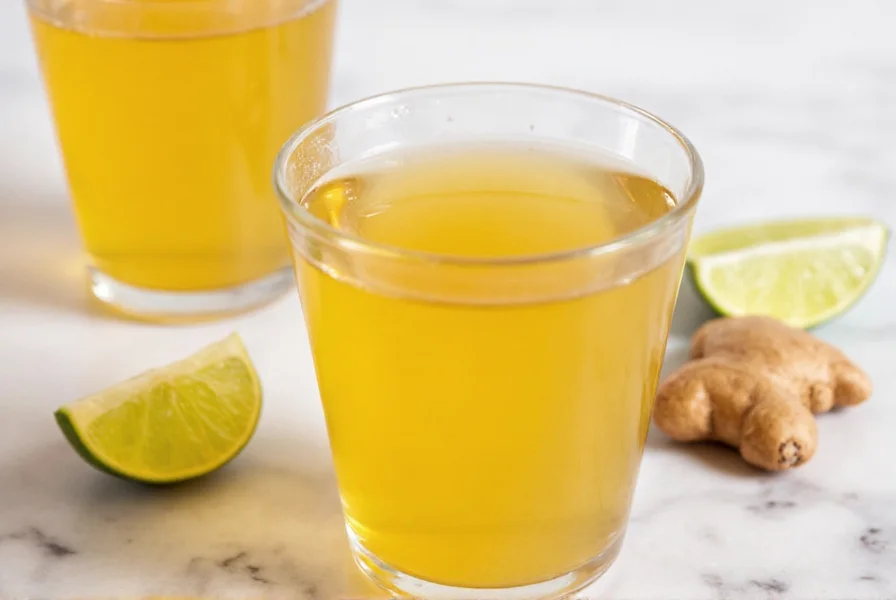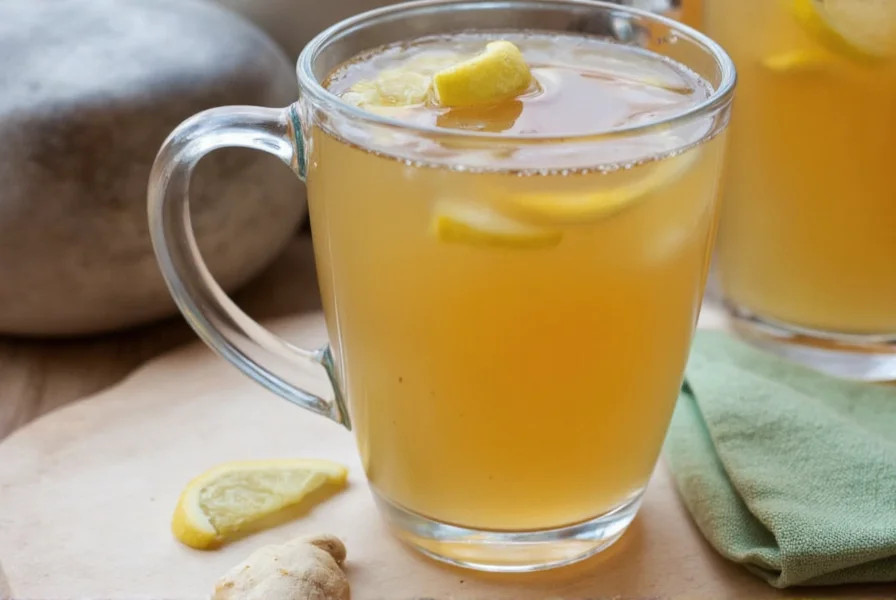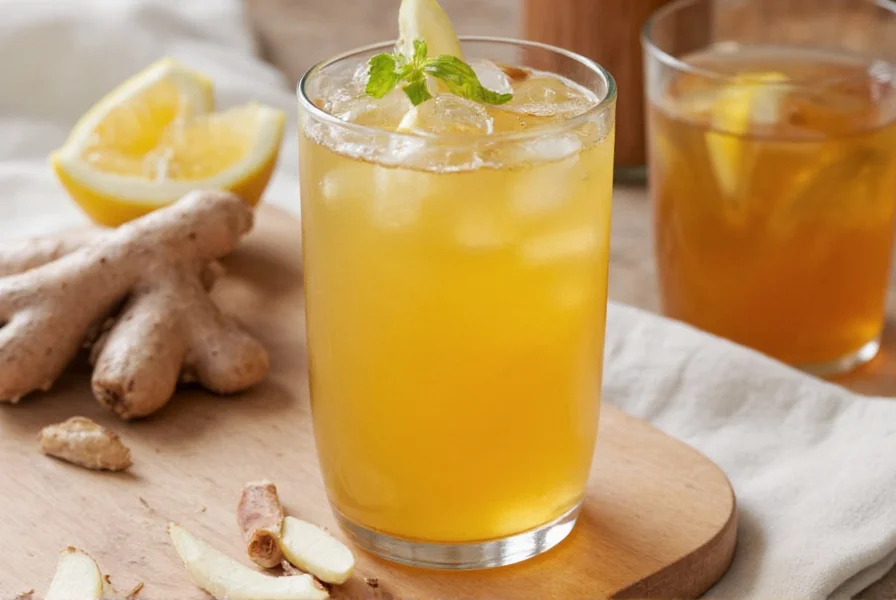Nothing compares to a steaming cup of homemade ginger tea when you need comfort, relief from digestive discomfort, or a natural boost during cold season. This ancient remedy, cherished across Asian and Middle Eastern cultures for centuries, combines simplicity with remarkable health properties. Unlike store-bought versions that often contain artificial flavors and excessive sugar, preparing ginger tea from fresh root ensures maximum potency of gingerol—the active compound responsible for ginger's therapeutic effects.
Why Fresh Ginger Tea Outperforms Commercial Alternatives
When you learn how to make ginger tea at home, you gain control over ingredient quality and potency. Commercial tea bags typically contain dried, powdered ginger with significantly reduced gingerol content compared to fresh root. Studies show fresh ginger contains up to 20 times more active compounds than dried alternatives. This difference translates directly to effectiveness—whether you're seeking relief from nausea, inflammation, or seasonal respiratory issues.
Essential Ingredients for Authentic Ginger Tea
Creating the best ginger tea requires minimal but high-quality components:
| Ingredient | Amount | Purpose |
|---|---|---|
| Fresh ginger root | 1-2 inches | Primary source of gingerol and therapeutic compounds |
| Filtered water | 2 cups | Optimal extraction medium for ginger compounds |
| Lemon (optional) | ½ fruit | Enhances absorption of ginger compounds and adds vitamin C |
| Raw honey (optional) | 1-2 tsp | Natural sweetener with additional antimicrobial properties |
Select ginger root that feels heavy for its size with smooth, tight skin—avoiding any with wrinkles or soft spots. Younger ginger (paler skin) offers milder flavor, while mature ginger (darker skin) delivers more intense heat and therapeutic compounds.

Step-by-Step Preparation Guide
Follow these precise steps for optimal ginger tea preparation that maximizes both flavor and health benefits:
- Prepare the ginger: Wash 1-2 inches of ginger root thoroughly. Using a spoon, scrape off the thin skin (this method preserves more flesh than peeling). Slice thinly against the grain or mince finely for stronger tea.
- Boil water: Bring 2 cups of filtered water to rolling boil in a glass or stainless steel pot (avoid aluminum which reacts with ginger compounds).
- Simmer ginger: Add prepared ginger to boiling water, reduce heat, and simmer uncovered for 10-15 minutes. Longer simmering (up to 20 minutes) increases potency but also bitterness.
- Strain and enhance: Remove from heat and strain into your cup. Add ½ lemon's juice and 1-2 tsp raw honey while tea is still hot for maximum compound absorption.
- Enjoy properly: Sip slowly while warm (not scalding) to maximize digestive benefits. For nausea relief, consume 20 minutes before potential triggers.
Scientifically-Supported Health Benefits
Understanding the health benefits of ginger tea goes beyond traditional wisdom—modern research validates many therapeutic claims:
- Digestive relief: A 2021 meta-analysis in Nutrients confirmed ginger's effectiveness in reducing nausea and accelerating gastric emptying, making it particularly valuable for morning sickness and postoperative nausea.
- Anti-inflammatory properties: Gingerol inhibits inflammatory pathways comparable to some NSAIDs, according to research published in Journal of Medicinal Food, offering natural relief for osteoarthritis.
- Immune support: The combination of ginger's antimicrobial properties and vitamin C from lemon creates a synergistic effect that enhances immune response during cold season.
- Blood sugar regulation: Studies in Complementary Therapies in Medicine show ginger consumption improves insulin sensitivity, making ginger tea a valuable addition to diabetes management protocols.
Four Popular Variations for Different Needs
Customize your simple ginger tea recipe based on specific health goals:
- Cold & Flu Fighter: Add ¼ tsp turmeric and 1 crushed clove garlic during simmering. The curcumin in turmeric enhances ginger's anti-inflammatory effects while garlic provides additional antimicrobial properties.
- Digestion Optimizer: Include 1 tsp fennel seeds during boiling. This combination specifically targets bloating and IBS symptoms, as shown in Frontiers in Pharmacology research.
- Sleep-Inducing Version: Replace honey with 1 tsp pure maple syrup and add 1 chamomile tea bag after removing from heat. The glycine in maple syrup promotes relaxation without blood sugar spikes.
- Metabolism Booster: Add ½ thinly sliced green apple and 1 cinnamon stick during simmering. This version increases thermogenesis while providing additional polyphenols.
Professional Brewing Tips for Maximum Benefits
Master the best way to brew ginger tea with these evidence-based techniques:
- Cut matters: Thin slices provide balanced flavor while grated ginger creates more intense, medicinal-strength tea. For consistent results, use a microplane grater.
- Water quality is crucial: Hard water minerals bind with ginger compounds, reducing bioavailability. Always use filtered or spring water.
- Timing precision: 10 minutes yields mild tea suitable for daily consumption; 15 minutes creates therapeutic strength for acute symptoms; never exceed 20 minutes to avoid excessive bitterness.
- Acid activation: Adding lemon juice immediately after brewing increases absorption of ginger compounds by up to 40%, according to food chemistry research.

Storage and Reuse Techniques
Extend the benefits of your ginger tea preparation:
- Concentrate method: Simmer 4 inches ginger in 2 cups water for 20 minutes, then store in glass jar in refrigerator. Dilute 1:1 with hot water when needed—maintains potency for up to 5 days.
- Ginger reuse: Used ginger slices can be rebrewed once more at half strength. After second use, dehydrate slices at 170°F for 6 hours to create ginger crisps.
- Freezing option: Pour cooled concentrate into ice cube trays. Once frozen, transfer to airtight container. Each cube equals one serving—thaw in hot water when needed.
Important Considerations and Safety
While ginger tea offers numerous benefits, certain populations should exercise caution:
- Those taking blood thinners should consult physicians before regular consumption, as ginger may enhance anticoagulant effects.
- Pregnant women should limit intake to one cup daily during first trimester, though ginger tea for nausea relief is generally considered safe later in pregnancy.
- Individuals with gallstones should avoid therapeutic-strength preparations as ginger may increase bile production.
- Discontinue use 7 days before surgery due to potential blood pressure and bleeding considerations.
Frequently Asked Questions
How much ginger tea can I safely drink per day?
For general wellness, 1-2 cups of standard strength ginger tea (1 inch ginger per 2 cups water) daily is safe for most adults. Those using ginger tea for specific therapeutic purposes (like nausea management) may safely consume up to 3 cups daily for short periods (up to 4 weeks). Exceeding 4 grams of ginger daily may cause heartburn or mouth irritation in sensitive individuals.
Can I make ginger tea without fresh ginger root?
While fresh ginger root produces the most potent tea, you can create acceptable alternatives using ½ tsp dried ginger powder per cup of water (simmer 5-7 minutes) or one high-quality ginger tea bag. However, dried ginger contains significantly less gingerol—studies show only 10-15% of the active compounds remain compared to fresh root. For medicinal purposes, fresh preparation is strongly recommended.
When is the best time to drink ginger tea for digestion?
For optimal digestive benefits, consume ginger tea 20-30 minutes before meals to stimulate digestive enzyme production. If addressing post-meal discomfort, drink within 1 hour of eating. For morning nausea, sip slowly upon waking. Avoid drinking within 2 hours of bedtime as ginger's stimulating properties may interfere with sleep for some individuals.
Why does my ginger tea taste bitter?
Bitterness typically results from over-boiling (exceeding 15-20 minutes), using mature ginger root without balancing ingredients, or water that's too hard. To reduce bitterness: 1) Limit simmering time to 10-12 minutes for standard strength, 2) Add lemon juice immediately after brewing (citric acid counters bitterness), 3) Use younger ginger root with pale skin, or 4) Include a small piece of licorice root during brewing which naturally counteracts bitterness without sweeteners.











 浙公网安备
33010002000092号
浙公网安备
33010002000092号 浙B2-20120091-4
浙B2-20120091-4